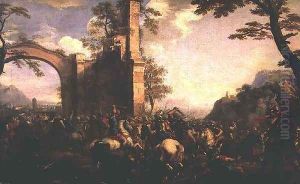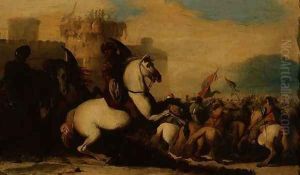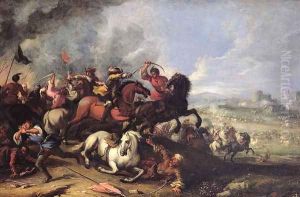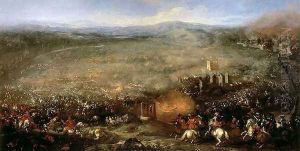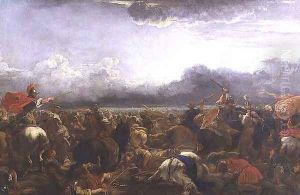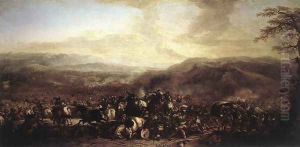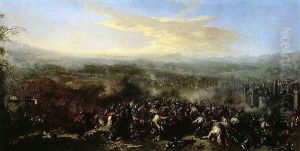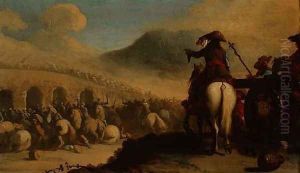Giacomo Cortese (see COURTOIS, Jacques) Paintings
Giacomo Cortese, better known by the French version of his name, Jacques Courtois or le Bourguignon, was a distinguished Baroque painter born in Saint-Hippolyte, France, in 1628. He was renowned for his masterful battle scenes and landscapes, which played a significant role in the European art scene of the 17th century. His family moved to Italy when he was a child, and it was there that Cortese would find his calling and ultimately make a significant mark on the art world.
Cortese's early life was marked by an intense period of study and apprenticeship in Italy. He was initially trained by his father, Jean Courtois, who was also a painter, but it was his work under the guidance of other Italian masters that truly shaped his artistic direction. His talent for depicting military scenes and his keen observation of the dynamic interplay of light and shadow quickly set him apart from his contemporaries. Cortese's paintings are characterized by vivid realism, dramatic intensity, and a remarkable ability to convey the tumultuous energy of battlefields.
In the mid-17th century, Cortese's work caught the attention of high-profile patrons, including members of the Medici family in Florence and the Papal court in Rome. His reputation as a master of battle scenes reached its zenith when he entered the service of Prince Mattias de' Medici. The artist's prolific period in Rome was marked by significant commissions that allowed him to refine his style further and solidify his reputation across Europe.
Despite his success, Cortese's life was not without its challenges. He grappled with the pressures of his growing fame and the demands of his patrons. In a surprising turn of events, later in his life, he joined the Jesuit Order, a decision that had a profound impact on his art. His later works, while fewer in number, reflected a deeper contemplation of his subjects and a continued refinement of his technique.
Giacomo Cortese passed away in Rome in 1679, leaving behind a legacy that would influence generations of artists. His works are preserved in some of the world's most prestigious museums, serving as a testament to his skill and enduring impact on the art world. Cortese's ability to capture the chaos and beauty of battle scenes with such precision and emotion remains unrivaled, making him one of the most celebrated painters of his era.
